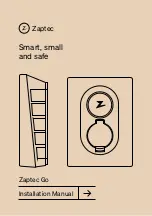
07 Wheels and tires
Tire inflation
07
178
Checking tire pressure
Cold tires
Inflation pressure should be checked when the
tires are cold.
The tires are considered to be cold when
they have the same temperature as the sur-
rounding (ambient) air.
This temperature is normally reached after the
car has been parked for at least 3 hours.
After driving a distance of approximately 1 mile
(1.6 km), the tires are considered to be hot. If
you have to drive farther than this distance to
pump your tire(s), check and record the tire
pressure first and add the appropriate air pres-
sure when you get to the pump.
If checking tire pressure when the tire is hot,
never "bleed" or reduce air pressure. The tires
are hot from driving and it is normal for pres-
sures to increase above recommended cold
pressures. A hot tire at or below recommended
cold inflation pressure could be significantly
under-inflated.
To check inflation pressure:
1.
Remove the cap from the valve on one tire,
then firmly press the tire gauge onto the
valve.
2.
Add air to reach the recommended air
pressure
3.
Replace the valve cap.
4.
Repeat this procedure for each tire, includ-
ing the spare.
5.
Visually inspect the tires to make sure there
are no nails or other objects embedded
that could puncture the tire and cause an
air leak.
6.
Check the sidewalls to make sure there are
no gouges, cuts, bulges or other irregular-
ities.
NOTE
•
If you overfill the tire, release air by
pushing on the metal stem in the center
of the valve. Then recheck the pressure
with your tire gauge.
•
Some spare tires require higher inflation
pressure than the other tires. Consult
the tire inflation tables, see page 179,
or see the inflation pressure placard.
Load ratings
Load ratings
91
1365 lbs (615 kg)
93
1433 lbs (650 kg)
Load ratings
99
1709 lbs (755 kg)
102
1874 lbs (850 kg)
104
1984 lbs (900 kg)
107
2150 lbs (975 kg)
Speed ratings
The speed ratings in the tables translate as fol-
lows:
Speed ratings
M
81 mph (130 km/h)
Q
100 mph (160 km/h)
T
118 mph (190 km/h)
H
130 mph (210 km/h)
V
149 mph (240 km/h)
W
168 mph (270 km/h)
Y
186 mph (300 km/h)
See also page 181 for an explanation of the
designations on the sidewall of the tire.
Summary of Contents for 2011 C70
Page 1: ...VOLVO C70 Owner s manual Web Edition ...
Page 2: ......
Page 8: ...Contents 8 12 12 Index Index 278 ...
Page 9: ...Contents 9 ...
Page 17: ...01 SAFETY ...
Page 47: ...02 INSTRUMENTS AND CONTROLS ...
Page 81: ...02 Instruments and controls 02 81 ...
Page 83: ...03 CLIMATE ...
Page 91: ...03 Climate 03 91 ...
Page 93: ...04 INTERIOR ...
Page 109: ...04 Interior Storage compartments 04 109 ...
Page 117: ...05 LOCKS AND ALARM ...
Page 133: ...05 Locks and alarm 05 133 ...
Page 135: ...06 STARTING AND DRIVING ...
Page 171: ...06 Starting and driving 06 171 ...
Page 173: ...07 WHEELS AND TIRES ...
Page 199: ...07 Wheels and tires 07 199 ...
Page 200: ...G020920 200 Washing and cleaning the car 202 Paint touch up 206 ...
Page 201: ...08 CAR CARE ...
Page 207: ...08 Car care 08 207 ...
Page 209: ...09 MAINTENANCE AND SERVICING ...
Page 237: ...10 AUDIO ...
Page 261: ...10 Audio 10 261 ...
Page 263: ...11 SPECIFICATIONS ...
Page 264: ...11 Specifications Label information 11 264 ...
Page 285: ......
Page 286: ...Kdakd 8Vg 8dgedgVi dc IE JH6 8VcVYV 6I Eg ciZY c HlZYZc iZWdg 8deng i Kdakd 8Vg 8dgedgVi dc ...
















































